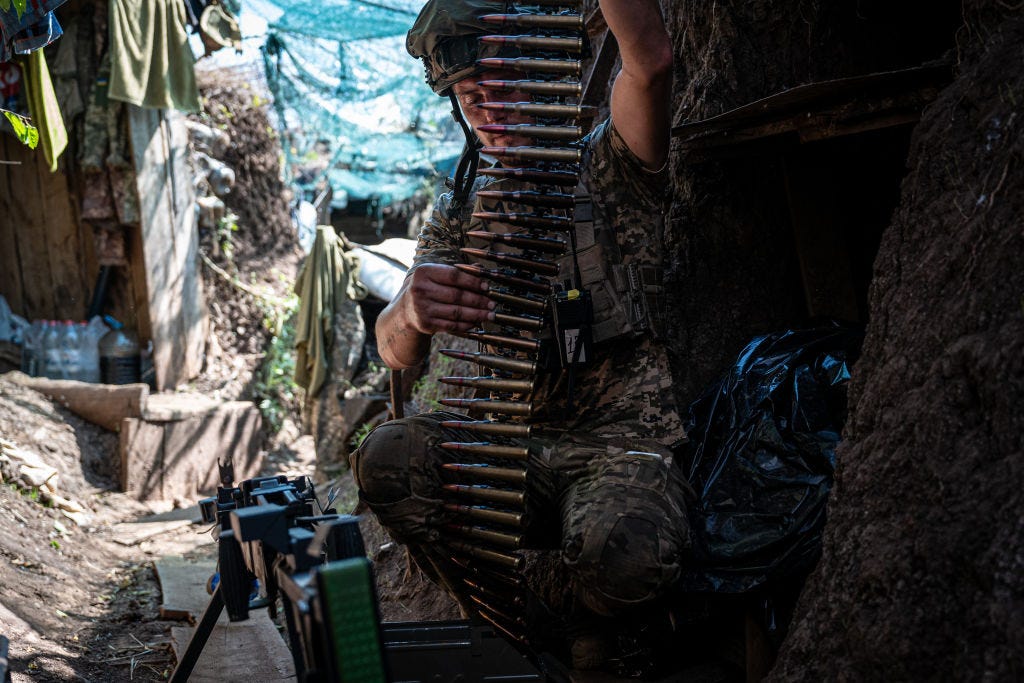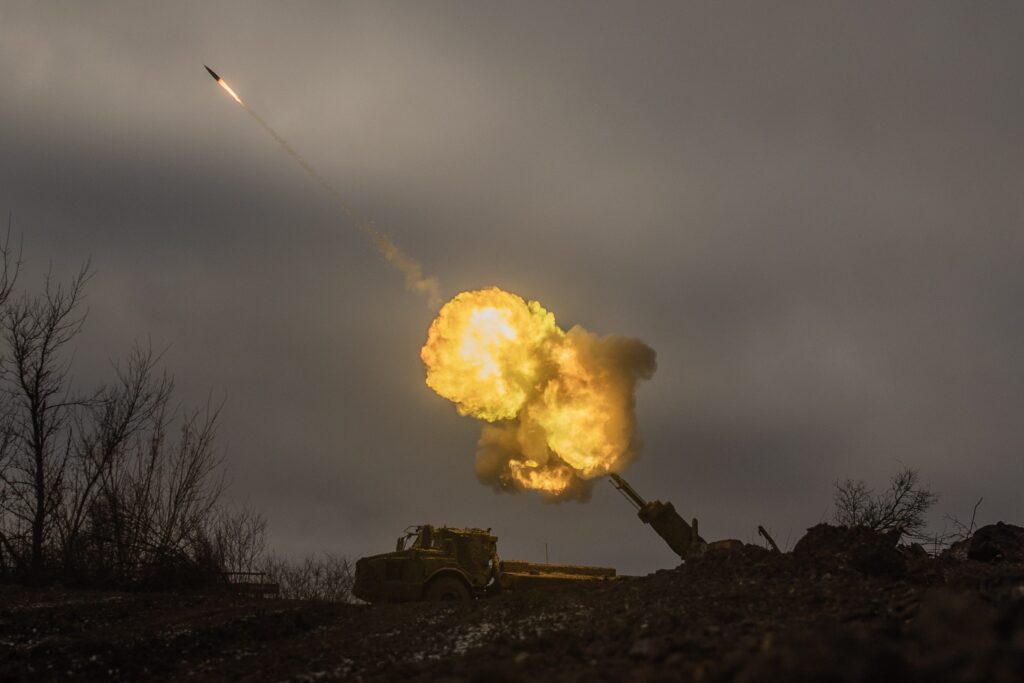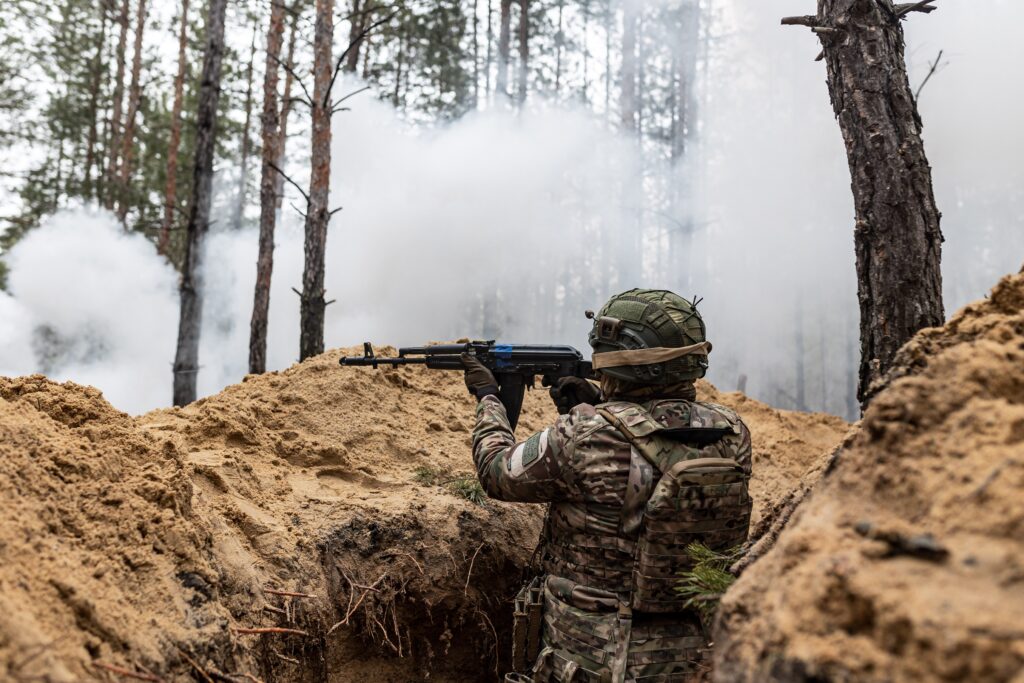- Western militaries aren't ready to fight wars of attrition like the Ukraine war, a former Army officer argues.
- Great power conflict may not be quick and decisive and could boil down to attrition.
- The war in Ukraine has shed light on what resources and preparations are needed to win.
There's a real possibility that a future great-power war might look a lot like Ukraine, and Western militaries aren't as ready as they should be for this kind of long, bloody fight, a former Army officer argued in a new article.
Though its hard to say when talking major powers with nuclear arsenals, great-power conflict could result in a protracted attritional kind of warfare. Western militaries haven't been preparing for that type of fighting, and it may need a change in strategy, resource management, and training.
"In attritional wars, military operations are shaped by a state's ability to replace losses and generate new formations, not tactical and operational manoeuvres," retired US Army lieutenant colonel Alex Vershinin explained in a Royal United Services Institute commentary, "The Attritional Art of War: Lessons from the Russian War on Ukraine," published Monday. Unlike maneuver warfare, which is aimed at quickly and violently defeating an enemy, the attritional fight takes time, maybe years.
"The side that accepts the attritional nature of war and focuses on destroying enemy forces rather than gaining terrain is most likely to win. The West is not prepared for this kind of war," he said.
Vershinin noted that Western militaries have long seen attritional conflicts as exceptions to be avoided at all costs in favor of the shorter, maneuver-focused clashes. Rather than a "decisive battle" through maneuver warfare, "attritional warfare focuses on destroying enemy forces and their ability to regenerate combat power, while preserving one's own," he wrote, noting that a successful attritional strategy "accepts that the war will last at least two years."
Between near-peer rivals, such as China and the US, victory in combat may be about who has the ability to replace losses and keep fighting. Stronger military powers are far more likely to have widely available resources and recruits, meaning fighting could drag on, similar to what's being seen in Ukraine, where the Russians are battling NATO-backed forces in Kyiv.

On both sides of the war, firepower has proven vital, as has the ability to outgun and outlast, chipping away at enemy positions and maintaining pressure. After Ukraine initially fought off Russia's invasion of Kyiv in the early weeks of the full scale invasion, Western assistance packages largely helmed by the US gave it the ammunition it needed to both defend itself and attack Russian positions.
The rate of fire in Ukraine has been astonishing — Russian forces averaged 15,000 shells a day throughout 2022 — and both sides have been burning through stockpiles. Both the West and Russia have ramped up production and industrial capacity to meet demand, and the war has since prompted the US Army to at least question how much ammunition it actually needs to fight future conflicts.
"Wars of attrition are won by economies enabling mass mobilization of militaries via their industrial sectors," Vershinin wrote in his RUSI commentary. "Armies expand rapidly during such a conflict, requiring massive quantities of armored vehicles, drones, electronic products, and other combat equipment."
Important, too, is the ability to strike deep into enemy territory, overwhelm defenses, and target its facilities and infrastructure. This aspect has been seen throughout the war in Ukraine as well, with both sides using a mix of long-range assets and drones to target energy hubs, civilian centers, and other key sectors with the purpose of damaging production and supply lines.

The war in Ukraine has also demonstrated the importance of being able to quickly replenish depleted forces, making up for high casualties on the battlefield.
Russia has been able to do this successfully, rebuilding manpower despite suffering high losses, upwards of over 300,000 casualties according to Western estimates. Ukraine currently faces a shortage of recruits, and its parliament is currently debating a bill intended to expand mobilization and enforce stricter draft rules.
Ukrainian President Volodymyr Zelenskyy has been warning for months that the army faces a severe shortage of qualified troops on the front but has not been able to present a clear strategy for how to conscript or recruit the forces needed. The president's former top commander, Gen. Valery Zaluzhny, often argued for further mobilization.
According to Vershinin, Western forces could face personnel issues, as their NATO armies value professional and experienced non-commissioned officers (NCOs) and troops that, if taken out of battle, aren't easily replaceable.
"The most effective model" for an army, he wrote, is a balanced mixture of a NATO-style "medium-sized professional army" with a Soviet-style "mass of draftees available for mobilization."
Future large-scale conflicts could also look a lot like the battlefields in Ukraine in other ways, potentially riddled with challenging technologies like evolutions in electronic jamming and drones, as well as artillery, mines, and traditional infantry. This makes logistics and planning key, adding complexities to fighting.
